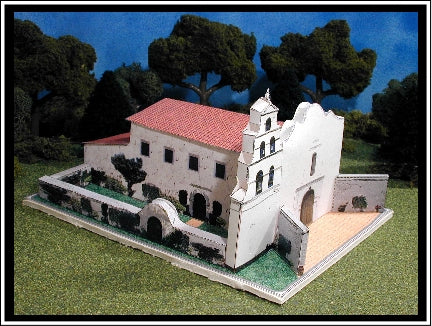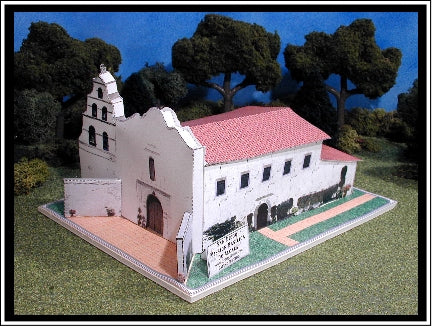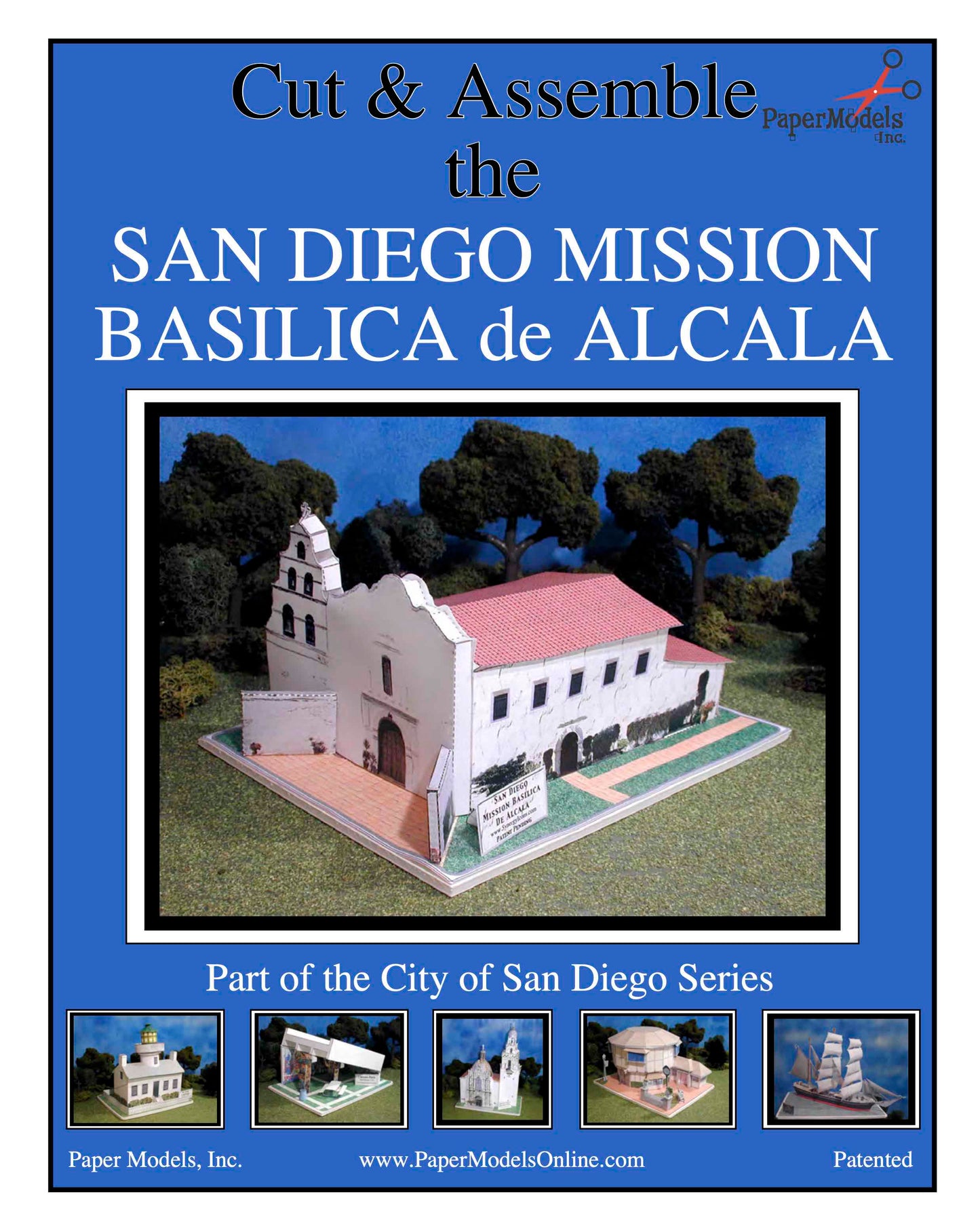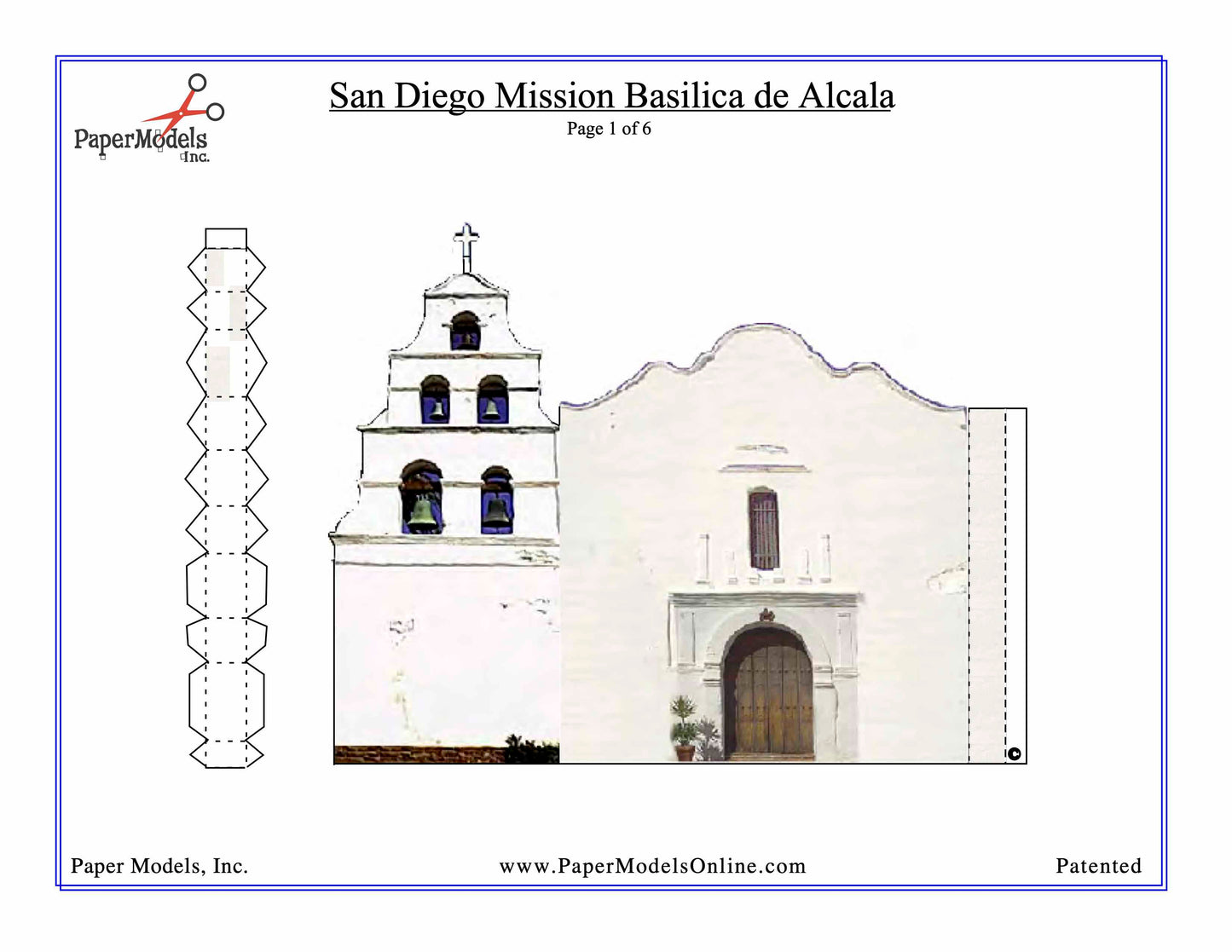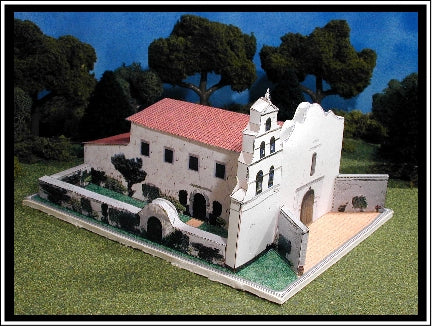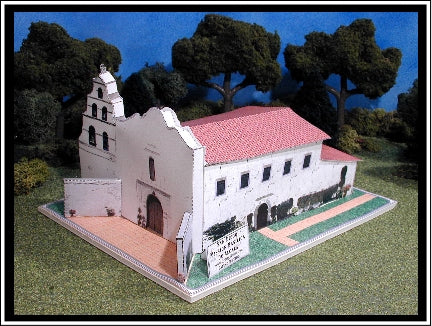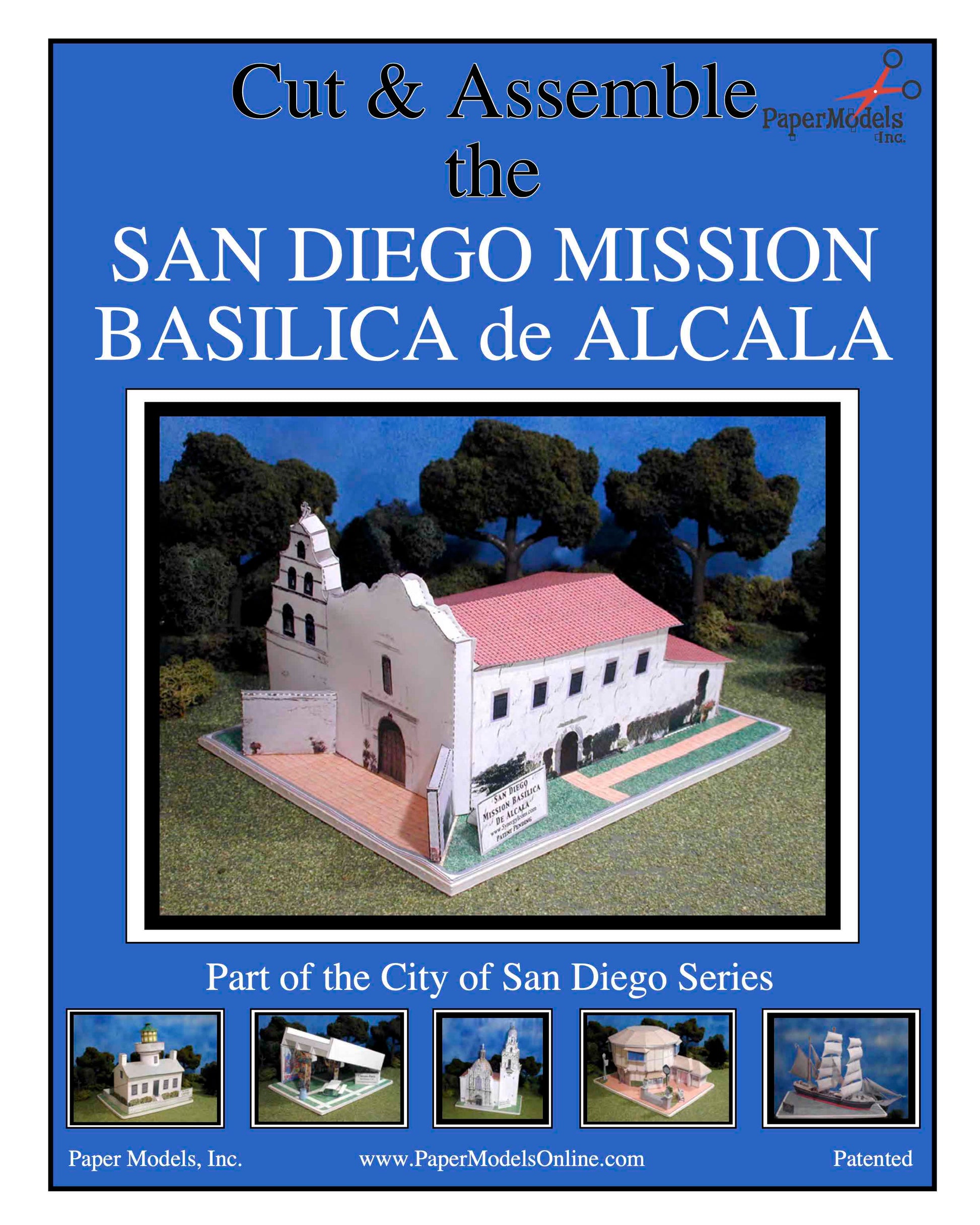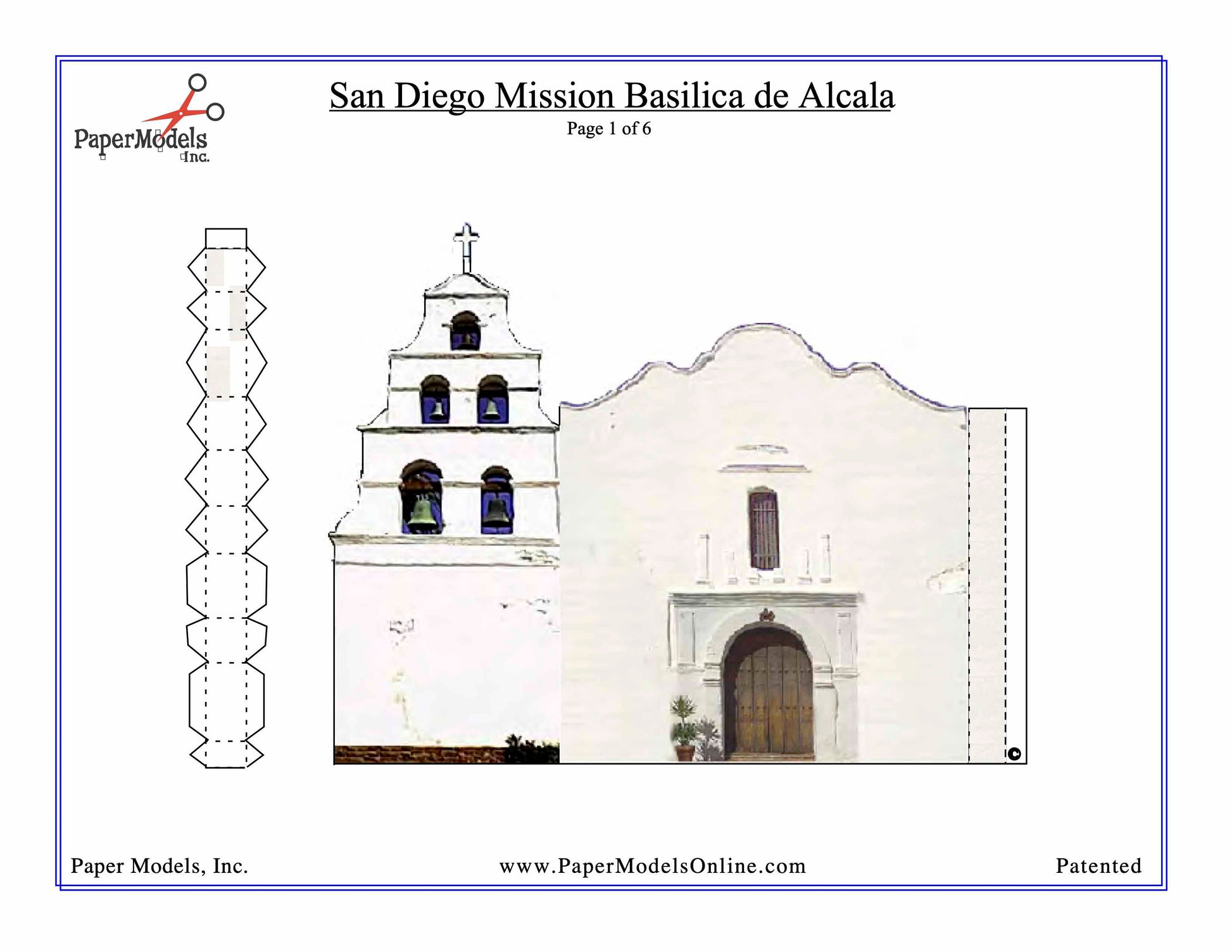California Mission San Diego de Alcala - Photorealistic - Paper Model Project Kit
California Mission San Diego de Alcala - Photorealistic - Paper Model Project Kit
Couldn't load pickup availability
🌟 Welcome to Paper Models Online – Your Shortcut to Academic Excellence! 🌟
Are you tired of stressing over last-minute school projects? Look no further! Paper Models Online is here to make your academic life a breeze.
🚀 Why Choose Us?
At Paper Models Online, we understand the pressure of looming deadlines and the desire for that coveted "A" grade. That's why we've crafted the perfect solution for you! Whether you're a student aiming for extra credit, a parent looking for quality time with your kids, or just someone in need of a break from the chaos, our paper models are your ticket to success!
💻 Instant PDF Download OR Pre-Printed & Shipped
You're in control! Choose from our instant PDF download, starting at just $9.95 for the 7"x10" size or $11.95 for the 10"x13" size.
Print it on your home or office printer using regular paper, or opt for the hassle-free pre-printed option. We'll ship it directly to your doorstep for a flat $5 fee via USPS First-Class Parcel, ensuring you get it in 1-3 days!
✂️ Easy Assembly, Maximum Impact
With just a pair of scissors, some glue, and an hour of your time, you can turn these paper sheets into stunning three-dimensional architectural replicas or complete science projects. The images on our website are real models made from our kits, and we even provide a history to help you craft an impressive report.
🎨 Unleash Your Creativity
Not into mission kits? No worries! Our models double as templates for your creative genius. Paint, trace, adjust sizes—your imagination is the only limit! Create a custom masterpiece that reflects your unique style and personality.
🛒 The Buying Process Made Simple
- Choose Your Size: 7"x10" or 10"x13"
- Choose Your Delivery: Instant PDF download or pre-printed and shipped
- Purchase Your Model: It's that easy!

📦 Typical Kit Sample
Each kit includes 8 to 18 pages, providing everything you need to bring the model to life. An "exploded view" guides you through assembly, and a complimentary history adds that extra touch for your report. Impress your teacher not just with creativity but also with your research skills!
Don't let deadlines stress you out. Choose Paper Models Online for your next school project, and let us be Your Best Way To Get An "A"! 🌟
 |
 |
 |
| Exploded View | Sample Pieces | Finished Model |
Download Instructions
Free History For Your Report
Mission San Diego de Alcalá (Saint Didacus of Alcalá)
A brief historyThe Mission San Diego de Alcala is the 1st mission founded in California. It was founded on June 16th, 1769 by Friar Junipero Serra. It was moved from Presidio Hill above Old Town to present site in 1774, was burned in an Indian attack in 1775, rebuilt in 1780, destroyed in an earthquake in 1803, restored and enlarge in 1813. The present building is a restoration of the 1813 church that was rebuilt in 1931.
Named for Saint Didacus, or Diego, was born in 1400, in the Spanish Province of Andalusia. He became a member of the Franciscan Order of Airizafa and there took the habit of a lay brother. The young Franciscan Brother taught Christianity and converted the natives to the Faith in the Canary Islands. In 1450, Didacus journeyed to Rome. There, Didacus took charge of the infirmary of the Friary of Ara Caeli, where he was engaged in nursing many sick friars, some of whom were said to have miraculously recovered through his care. He returned to Spain and lived for thirteen years at Alcala in Castile where he took ill and died on November 12, 1463. He was canonized in 1588 for the many miracles attributed to him.
Father Junipero Serra, a 56 year old, 5’2” 120 pound Franciscan priest from Majorca, Spain was chosen Superior of the Franciscans and Gaspar de Portola was the military leader of the first expedition to build a series of missions. On June 29th, Father Serra arrived in San Diego to join the five expeditions sent from New Spain (Mexico). On July 16, 1769 the first of twenty one missions that make up the chain of mission along the El Camino Real or Kings Highway was first established on a hill overlooking the bay, that hill is now known as Presidio Hill. Each of the missions was built to be one day's walk apart.
The settlement had many problems the first year. The natives came only to accept gifts and to take unguarded possessions. The supposedly removed sheets from people in the hospital and even tried to cut the sails from the San Carlos, one of the ships that brought the expedition. The natives made fun of the padres and the soldiers until the mission was attacked. The soldiers responded with gunfire and two Spaniards died, three were wounded and at least three of the attackers were killed.
Even thought he padres healed the wounded natives, conversions was still not occurring. One native boy who helped the padres learn his language, was persuaded to convince a father to bring his child to be baptized. When the father appeared with child, Father Serra gathered the community and before he could complete the ceremony another native snatched the child and left. Father Serra was much grieved by this incident.
This mission was almost abandoned that first year do to the lack of supplies and the illness that depleted the men’s strength. Fortunately a relief ship, the San Antonio, arrived finally and the mission endured.
Five years later the mission was relocated its present site six miles east, under Father Luis Jayme and approved by Father President Serra in August of 1774 to obtain a better supply of water, more fertile soil and to get away from the Spanish military presence that intimidated the Native Americans. The new site was close to the San Diego River and the American Indian villages.
Although Father Jayme had established a rapport with the local American Indians, two of the mission Indians became discontented with the rules and regulations and they incited eight hundred to storm the grounds in the middle of the night on November 4th, 1775. The mission was burned to the ground and Father Jayme was killed and became California’s first Christian Martyr and is now buried under the alter of the present church.
The padres, under Father Serra who returned to supervise, rebuilt the mission according to army fort specifications. By 1780 most of the reconstruction of the Mission and its outbuilding was completed. The church and other buildings were arranged in a quadrangle around a patio.
In 1807 work was begun on a dam 6 miles upriver that would provide the necessary water for the mission to flourish. The dam was complete in 1816 and evidence can still be seen today.
This is the fifth church on this site. The church was enlarged over the years to accommodate the growing population of neophytes (baptized American Indians). In 1812, as the fourth church was being built, a devastating earthquake damaged and destroyed several other missions. In 1813, the church was enlarged and the present church, rebuilt in 1931, mirrors it. Buttress wings were added during the 1813 enlargement to stabilize the façade in the even of an earthquake.
The beginning of the end of the Mission System came in 1821 when Mexico gained its independence from Spain. During the Mexican Occupation of California, the Act of Secularization caused the Mission San Diego to be given over to Santiago Arguello.
After the United States acquired this area from Mexico, two companies of the artillery occupied the mission beginning in November 1853. For the next several years, various companies of artillery and cavalry were at the mission until 1858 or early 1859. The army used the adobe church as a stable for their horses. They made some repairs and added a second floor to the church. Subsequently, the mission was abandoned for several years.
In 1862, 22 acres of the Mission lands were restored to the Church by order of President Abraham Lincoln.
In 1892, the Sisters of Saint Joseph of Carondolet moved onto the mission compound and conducted an American Indian childrens' school for seventeen years.
In 1931, only the façade was still standing and the mission was rebuilt to mirror the 1813 church. The present Mission Church was named a minor basilica by Pope Paul VI in the bicentennial year of 1976. A basilica is a church of very important historical significance. Only four of the California missions are basilicas: Mission San Francisco de Asis (Dolores), Mission San Carlos Borromeo, Mission San Diego and most recently, Mission San Juan Capistrano.
It serves today as an active parish for the Catholic community.
© Copyright – Paper Models, Inc. – All Rights Reserved
Share
